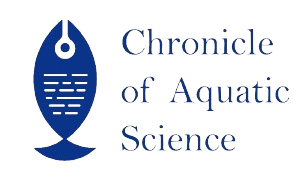| File | Action |
|---|---|
| Shinde and Sukhdhane, 2023 | Download |
- 919088951040 call us
- chronicleofaquaticscience@gmail.com Mail us
CoAS_V1IS2_02
Mini-review
Minireview on Single Cell Protein Usage in Fisheries and Aquaculture
Sagar Vitthal Shinde and Kapil Sukhdhane
Abstract
Single-cell protein (SCP) is a protein produced from the mass culture of microorganisms, such as bacteria, algae, and yeast. SCP has been proposed as a sustainable and environmentally friendly alternative to fishmeal, which is a major component of aquafeeds. There are several advantages to using SCP in fisheries and aquaculture. SCP can be produced from a variety of renewable resources, including waste streams from other industries, such as agriculture and food processing. This helps to reduce environmental impact by reducing the amount of waste that is produced and by diverting it from landfills. It is a complete protein, meaning that it contains all the essential amino acids that fish need to grow and thrive. This contrasts with some plant-based proteins, which are incomplete and must be supplemented with other amino acids. SCP is relatively inexpensive to produce. This is due to the fact that microorganisms can be grown in large, closed systems, which allows for efficient use of resources and control of environmental conditions. Despite these advantages, there are some challenges to using SCP in aquaculture. One challenge is that SCP must be produced in large quantities to meet the demand of the aquaculture industry. This can be a challenge, as SCP production facilities are expensive to build and operate. Another challenge is that SCP must be carefully processed to ensure that it is safe for fish to eat. This is because microorganisms can produce toxins that can be harmful to fish. Despite these challenges, SCP has the potential to be a breakthrough in the aquaculture industry. By providing a sustainable, affordable, and complete protein source, SCP can help to reduce the environmental impact of aquaculture and improve the health and welfare of farmed fish.
Keywords
Single-cell protein, Nutritional Enhancement, Disease Management, Waste Recycling
References
Adedayo, M.R., E.A. Ajiboye, J.K. Akintunde and A. Odaibo. (2011). Single cell proteins: as nutritional enhancer. Advances in Applied Science Research2(5):396-409.
Bharti, V., Pandey, P.K. and Koushlesh, S.K. (2014). Single Cell Proteins: a Novel Approach in Aquaculture Systems. World Aquaculture, 45(4);62-63
Chen, X.Q., Zhao, W., Xie, S.W., Xie, J.J., Zhang, Z.H., Tian, L.X., Liu, Y.J. and Niu, J. (2019). Effects of dietary hydrolyzed yeast (Rhodotorula mucilaginosa) on growth performance, immune response, antioxidant capacity and histomorphology of juvenile Nile tilapia (Oreochromis niloticus). Fish Shellfish Immunology, 90:30-39.
Ganuza, E., Yang, S., Amezquita, M., GiraldoSilva, A. and Andersen, R.A. (2019), Genomics, biology and phylogeny Aurantiochytrium acetophilum sp. nov. (Thraustrochytriaceae), including first evidence of sexual reproduction. Protist, 170:209-232.
Hojaosadati, S.A., Rasoul, K., Abbas, J., Hamid, R.S. (2000). Resources conservation and recycling. Journal of Chemical Engineering, 27(1-2): 125 138
Hu, J., Nagarajan, D., Zhang, Q., Chang, J.S. and Lee, D.J. (2018). Heterotrophic cultivation of microalgae for pigment production: a review. Biotechnology Advances, 36:54-67.
Huang, Y. T. and J.E. Kinsella (1986). Functional properties of phosphorylated yeast protein: Solubility, water-holding capacity and viscosity. Journal of Agriculture Food Chemistry, 344;670- 674
Ige, B.A. (2013). Probiotics use in intensive fish farming. African Journal of Microbiology Research 7(22):2701- 2711.
Jones, S.W., Karpol, A., Friedman, S., Maru, B.T. and Tracy, B.P (2020). Recent advances in single cell protein use as a feed ingredient in aquaculture. Current Opinion in Biotechnology 2020, 61:189–197
Kolndadacha, O.D., Adikwu, I.A., Okaeme, A.N., Atiribom, R.Y., Mohammed, A. and Musa, Y.M. (2011). The role of probiotics in aquaculture in Nigeria. Continental Journal of Fisheries and Aquatic Science 5(1):8-15.
Leyland, B., Leu, S., Boussiba, S. (2017). Thraustochytrids algae. Fungal Biology, 121:835-840.
Miller, B.M. and Litsky, W. (1976). Single Cell Protein in Industrial Microbiology. McGrow-Hill Book Co., New York.
Moran, C.A., Morlacchini, M., Keegan, J.D., Fusconi, G. (2018). The effect of dietary supplementation with Aurantiochytrium limacinum on lactating dairy cows in terms of animal health, productivity and milk composition. Journal of Animal Physiology and Animal Nutrition, 102:576-590
Overland, M., Karlsson, A., Mydland, L.T., Romarheim, O.H. and Skrede, A. (2013). Evaluation of Candidautilis, Kluyveromyces marxianus and Saccharomyces cerevisiae yeasts as protein sources in diets for Atlantic salmon (Salmo salar). Aquaculture 402-403:1- 7.
Ritala, A., Hakkinen, S.T., Toivari, M., Wiebe, M.G. (2017). Single cell protein state-of-the-art, industrial landscape and patents 2001-2016. Front Microbiology, 8:2009
Ritchie, H., and Roser, M. (2019): Meat and Seafood Production and Consumption.
Shah, M.R., Lutzu, G.A., Alam, A., Sarker, P., Chowdhury, M.A.K., Parsaeimehr, A., Liang, Y. and Daroch, M. (2018). Microalgae in aquafeeds for a sustainable aquaculture industry. Journal of Applied Phycology 30: 197- 213. Suman, G., Nupur, M., Anuradha, S. and Pradeep, B. (2015). Single Cell Protein Production: A Review. International Journal of Current Microbiology and Applied Science, 4(9): 251-262
Tibbetts, S.M. (2018). The potential for’ NextGeneration’, microalgae based feed ingredients for salmonid aquaculture in context of the blue revolution. In Microalgal Biotechnology. Edited by Jacob-Lopes E, Zepka LQ, Queiroz MI. IntechOpen; 151-175
Tocher, D.R., Betancor, M.B., Sprague, M., Olsen, R.E. and Napier, J.A. (2019). Omega-3 long-chain polyunsaturated fatty acids, EPA and DHA: bridging the gap between supply and demand. Nutrients 4;11(1):89
Watanabe, K., Arafiles, K.H.V., Higashi, R., Okamura, Y., Tajima T, Matsumura Y, Nakashimada Y, Matsuyama K, Aki T (2018). Isolation of high carotenoid producing Aurantiochytrium sp. mutants and improvement of astaxanthin productivity using metabolic information. Journal of Oleo Science, 67:571-578.
- Published online
- 27th July, 2023
How to Cite the Article
Shinde and Sukhdhane, (2023) Minireview on Single Cell Protein Usage in Fisheries and Aquaculture. Chronicle of Aquatic Science 1(2): 8-15
Copyright
This is an open-access article distributed under the terms of the Creative Commons Attribution License (CC BY). The use, distribution or reproduction in other forums is permitted, provided the original author(s) and the copyright owner(s) are credited and that the original publication in this journal is cited, in accordance with accepted academic practice. No use, distribution or reproduction is permitted which does not comply with these terms.

Shinde and Sukhdhane, 2023


